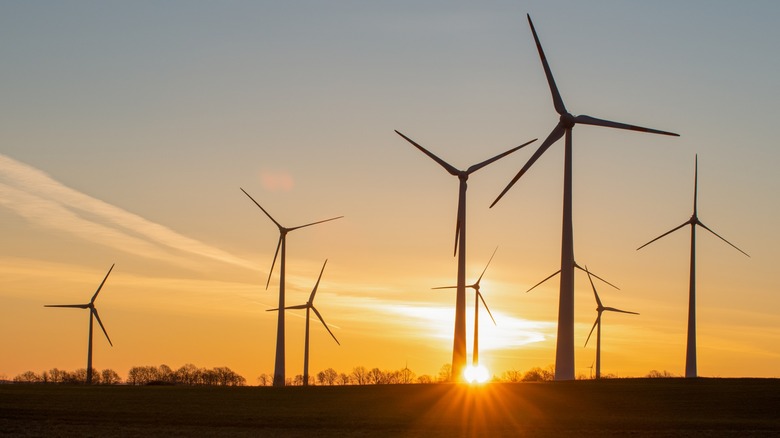Can A Residential Wind Turbine Actually Save You Money On Your Electric Bill?
In the ongoing pursuit for lower energy bills, homeowners have turned to several avenues to make their homes more sustainable. Advancements in energy efficiency, including Energy Star appliances that made homes 15 percent more efficient, and commercial solar panels allowed households to reduce their annual power costs significantly. However, Energy Star appliances are limited in their efficiency, and even solar panels have a cap on the energy they can produce.
Since solar has taken up much of the conversation since the passing of the 2006 Solar Investment Tax Credit, homeowners have been overlooking a possible alternative. Though the concept of using wind as a power source is centuries old, its first residential application in the United States didn't come about until the 1980s.
Since then, American Clean Power estimates that more than 70,000 wind turbines are active, generating 146 gigawatts of energy. While that's the equivalent of the power needed to run 46 million homes in the United States, wind turbines are primarily used for large-scale operations and utilities. It does beg the question, though, are homeowners missing out on increased savings and a more efficient power source?
The short answer is that it's complicated.
Efficiency vs. Space
There's a reason why, in 2019, nearly 25 percent of all renewable energy in the United States came from wind, and only 9 percent came from solar. It's all about efficiency. With current technology and at the height of their efficiency, solar panels can only convert approximately 20 percent of the energy they receive from the sun into usable power. Alternatively, wind turbines can convert up to 60% of the energy it absorbs via wind.
With the average home saving approximately $1,500 annually with solar panels, it would stand to reason that the same home could see even more significant savings when powered by a wind turbine. Unfortunately, several factors hinder the savings potential and make wind turbines difficult to implement on a residential scale. Maybe the most difficult of those factors to overcome is space.
According to the Department of Energy, a wind turbine providing a significant portion of the average home's power would require at least one acre of property. Alternatively, solar paneling typically fits on the roof of a home and requires no additional space. Even solar farms, which filter solar-produced energy into the local grid, take up relatively less space than residential turbines would. For example, a 10-acre farm could produce 1 megawatt of energy, enough to power about 200 homes.
A Matter of Unpredictability
Even if space weren't a dilemma, an increase in savings isn't guaranteed because the presence of wind isn't guaranteed. Similarly to solar panels and their need for adequate sunlight, wind turbines require a certain amount of wind to produce even a minimal amount of electricity. According to American Clean Power, the average modern turbine requires 6 to 9 mph winds to work. While coastal states struggle with an average wind speed below six mph, the middle swatch of the country is primed for wind-generated power.
Unlike solar panels, though, wind turbines do have a limit to the wind speed they can sustain. Generally, a turbine shuts down to prevent damage when winds reach 55 mph. Granted, a 55 mph wind is considered a strong gale and would be caused by a weather anomaly, but it's something to consider in states like Florida, where hurricanes are relatively frequent.
None of this even factors in the danger to the local avian population, with studies suggesting that turbines kill an average of 234,000 birds annually. So, yes, technically, a residential wind turbine can save you money on your electric bill. There are just a few hurdles that would need clearing before it was a wholly viable option.


